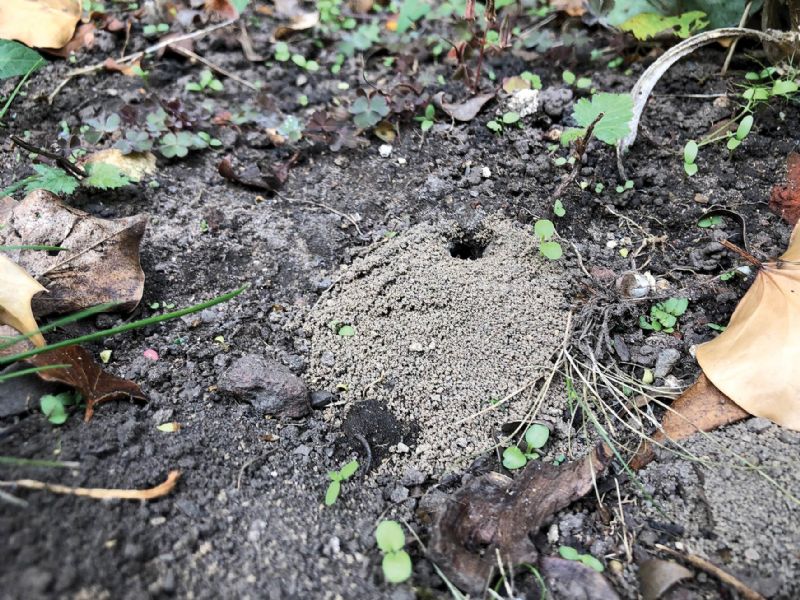- Home
- News, Articles & Reviews
We are hiring! Please click here to join our growing magazine delivery team in Gloucestershire!
Areas
Pets & Wildlife
Archive

Interesting ivy bees
All Areas > Pets & Wildlife > Wildlife Matters
Author: Dorothy Glen, Posted: Tuesday, 26th October 2021, 09:00
I recently discovered little ‘volcanoes’ of powdery soil in the sunny flower bed underneath my ivy. I’ve been waiting for them, as they appear every year around this time, along the line of the lawn.
This is the work of ivy bees, a relatively new addition to British wildlife, first being reported in the UK in 2001 and gradually moving north. Ivy bees are dainty bees, similar in size to honey bees but recognisable to me because they’re extra stripy – with bright narrow bands of black and yellow.
Seen in large numbers from September to November
They feed on nectar and pollen from ivy flowers, and if you have a generous patch of ivy in your garden they can be seen in large numbers from September to November, especially on a sunny day.
On my ivy, they are joined by honey bees, hover flies, wasps and red admiral butterflies, all taking advantage of this vital late food source. Sometimes the noise they create takes me by surprise and I look up to the ivy, at head height, and wonder if I should be so close to this intimidating mass of insects. But they’re not at all interested in me.
Male ivy bees have no sting, and females are rarely aggressive and struggle to penetrate human skin. If they do, it feels similar to a nettle sting. Even the wasps aren’t bothered with me when they already have such a great supply of nectar. So I watch and listen, and I find it calming having them hum away in the background.
Making little volcanoes in my flower bed
By mid-autumn, the ivy bees are busy mining their under-ground burrows, pushing the soil out of the top to make the little volcanoes I see in my flower bed.
They are solitary bees, but in my little corner of the garden where conditions are right there are many nests. Inside, the female bee deposits her eggs and a store of ivy pollen for the larvae, which emerge as bees the following year, around the time the ivy flowers again in September.
Ivy is a hugely valuable food source at this time of year for insects. You can encourage ivy bees into your garden by avoiding cutting it back until the spring (and no later), when the flowers are long gone and the birds have had the attractive purple berries.
Allowing it to flower has the added benefit of keeping the wasps fed, so they are less likely to bother you and your sweet autumn treats.Copyright © 2025 The Local Answer Limited.
Unauthorized use and/or duplication of this material without express and written permission from this site's author and/or owner is strictly prohibited. Excerpts and links may be used, provided that full and clear credit is given to The Local Answer Limited and thelocalanswer.co.uk with appropriate and specific direction to the original content.More articles you may be interested in...


© 2025 The Local Answer Limited - Registered in England and Wales - Company No. 06929408
Unit H, Churchill Industrial Estate, Churchill Road, Leckhampton, Cheltenham, GL53 7EG - VAT Registration No. 975613000You are leaving the TLA website...
You are now leaving the TLA website and are going to a website that is not operated by us. The Local Answer are not responsible for the content or availability of linked sites, and cannot accept liability if the linked site has been compromised and contains unsuitable images or other content. If you wish to proceed, please click the "Continue" button below:




